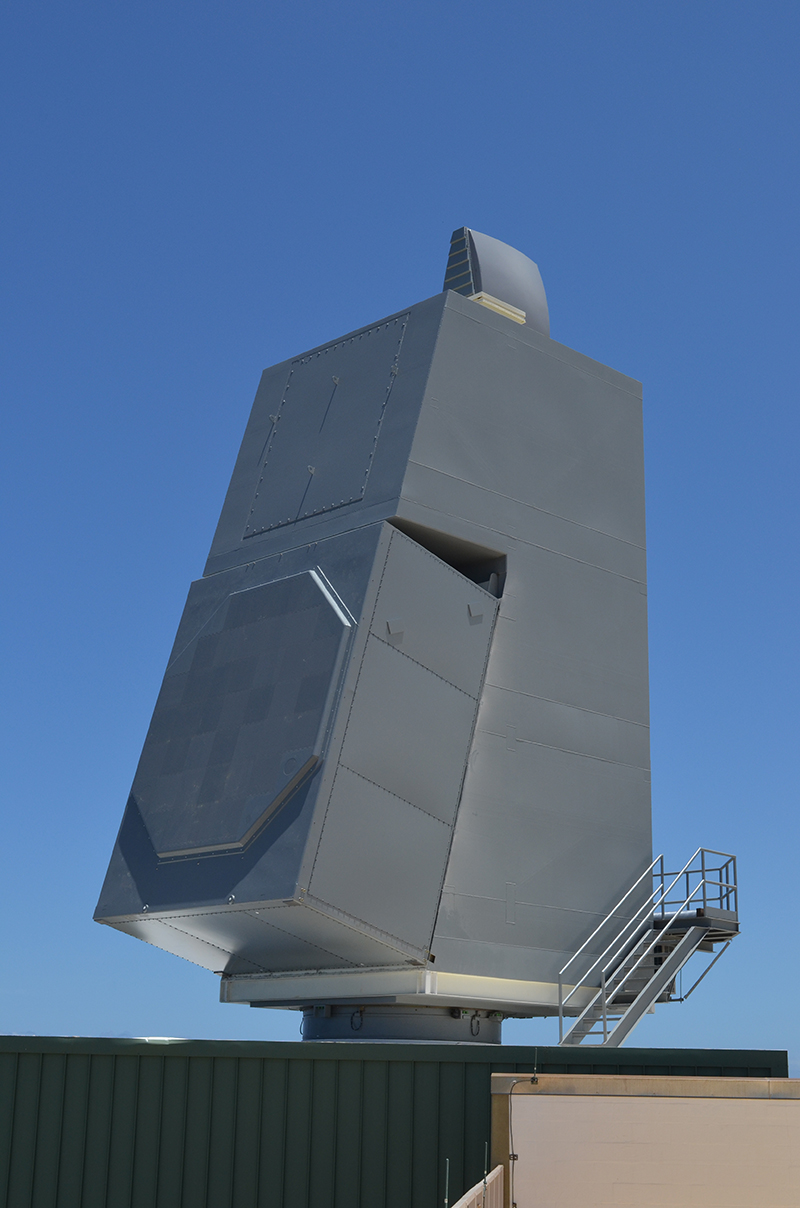News
Johns Hopkins APL Contributes ‘Once in a Lifetime’ Navy SPY-6 Radar System Upgrade
As a result of a collaborative effort including Raytheon and the Johns Hopkins Applied Physics Laboratory (APL), the U.S. Navy recently received delivery of the first Air and Missile Defense Radar (AMDR) AN/SPY-6 (SPY-6) array for installation on DDG-125, the latest destroyer in the Arleigh Burke class.
The SPY-6(V)1, the first of four SPY-6 designs in development, is a four-face, electronically steered phased-array radar that supports multi-mission warfare operations. SPY-6 integrates into the existing ship, combat and missile inventory systems, providing defense against ballistic and cruise missiles, anti-surface and anti-air threats, and electronic warfare.
On a collaborative SPY-6 development team under the sponsorship of the U.S. Navy, APL serves as the technical oversight lead, and Raytheon is the design agent and prime contractor.
“From the outset of the AMDR engineering and manufacturing development phase, APL and Raytheon developed an effective partnership that was made possible by the caliber of essential system requirements established by the government,” said Chris Barker, who manages the advanced radars program in APL’s Air and Missile Defense Sector (AMDS). “This afforded unique opportunities for embedded teaming, collaborative prototyping and joint analysis to deliver next-generation radar capabilities to the fleet.”
The SPY-6 is a replacement for the Navy’s SPY-1 system, which was developed nearly 50 years ago and is currently installed on Aegis cruisers and destroyers. According to Don Chesley, AMDS SPY-6 Chief Engineer and the Navy’s lead architect of the SPY-6 radar system, the current system has “served the country extremely well.”
“These systems are developed once in a lifetime because of the time and financial resources required — and the integration impact they have on the host Navy platforms,” he explained.
APL’s decades-long involvement in major Navy initiatives includes identifying new radars based on modern technology development. APL was central to the definition of the ‘‘Navy Radar Roadmap,’’ which identified the need for a large-scale SPY-1 replacement.
“Naturally, the Navy turned to APL as a trusted government partner that is well connected to industry experts to lead the development of the radar, which began in the early 2000s,” Chesley said. “APL is uniquely positioned to provide deep capability across the many disciplines needed to deliver something of this magnitude. It maintains a breadth and depth of technical skills needed to get the job done. I credit the many [subject matter experts] at APL for providing this capability for the U.S.”
The SPY-6 system fills a significant gap in warfighting performance that has been recognized in the ranks of the Navy for the last two decades. It is also designed to be easily maintained and calibrated, thereby increasing availability.
“Once the SPY-6 is delivered to the fleet, it will be recognized for both tactical and strategic fleet advantages,” Chesley said. “I have interacted directly with combatant commanders, high-level acquisition executives and ship crews who are all awaiting its introduction to the fleet. It gives me a feeling of satisfaction — and, frankly, increased pressure — to see it delivered in a quality state of readiness.”
The SPY-6 will transfer to the operational Navy as part of the Arleigh Burke-class (DDG-51) Flight III ship program. Smaller variants of SPY-6 are also slated for installation on new and existing ship classes, including carriers, frigates and amphibious vessels. APL will continue as a technical lead overseeing the integration and testing of the radar for the Aegis combat system and DDG-51 ship systems until it is turned over to the operational Navy in 2024 as an Initial Operational Capability (IOC).
“APL, in collaboration with the broader technical community, directly contributed to this significant program milestone that is a testament to the U.S. Navy’s longstanding commitment to disciplined systems engineering,” Barker said. “Given the important role SPY-6 will serve on future combatants, particularly as the replacement of the venerable SPY-1 radar on Arleigh Burke destroyers, the U.S. Navy relied on APL and other trusted government laboratories to oversee the full breadth of SPY-6 development to deliver proven warfighting capability.”
